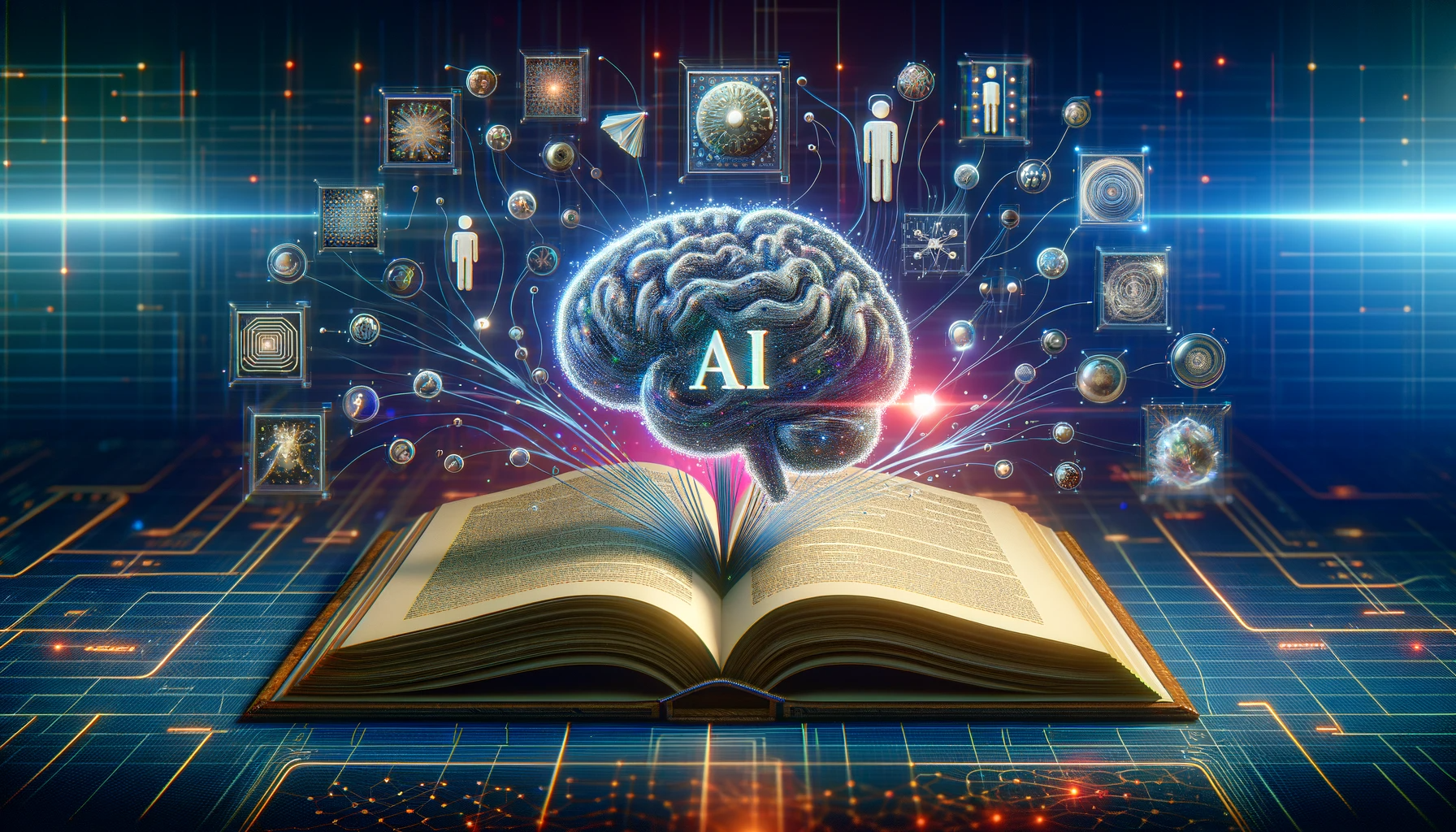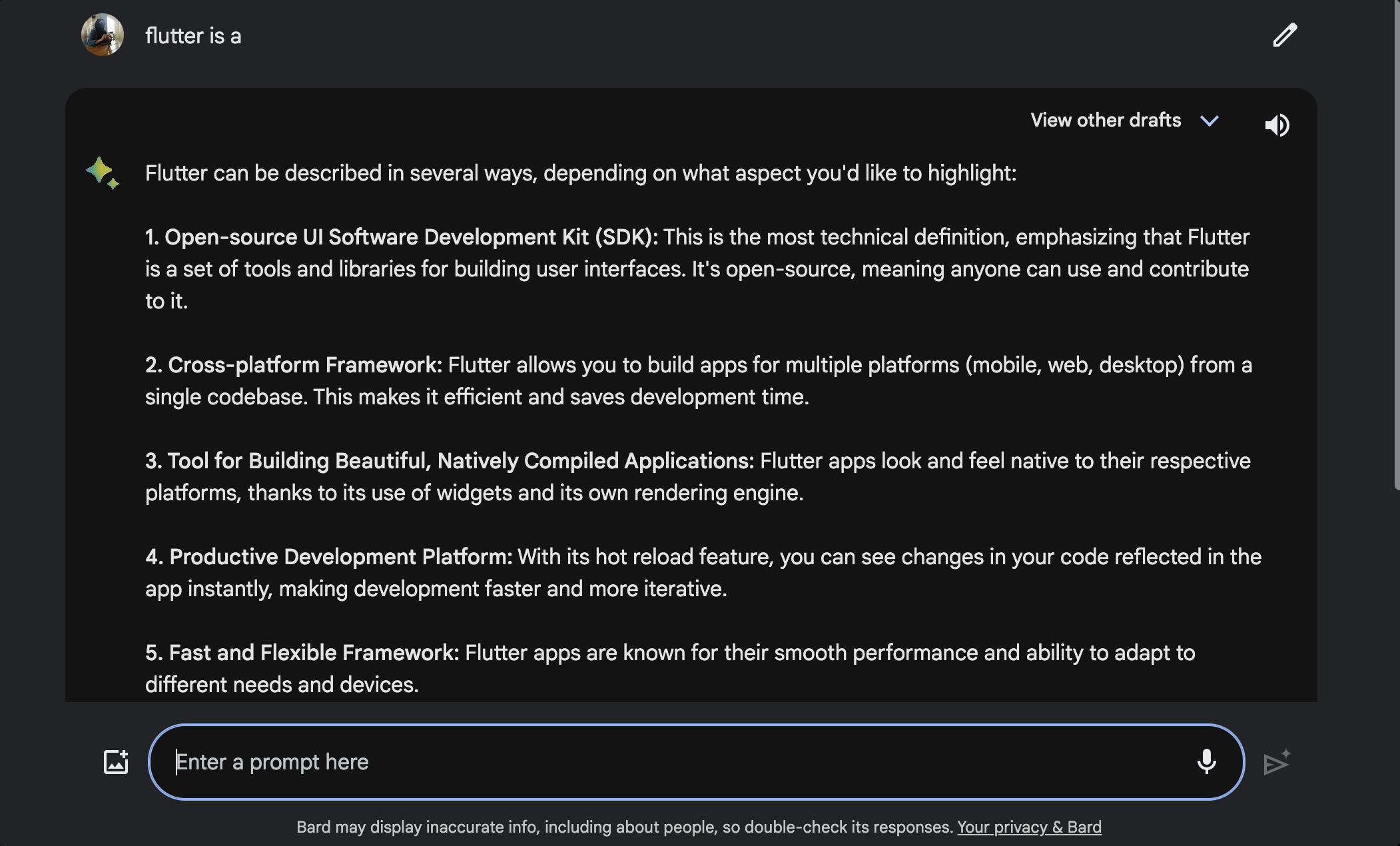Generative AI: An overview

Last time, I completed a course on Introduction to Generative AI offered by Google Cloud. It was an enlightening experience, and I'm excited to share what I've learned.

Understanding AI and Its Branches
Before delving into generative AI, it's crucial to understand the broader landscape of Artificial Intelligence (AI), Machine Learning (ML), Deep Learning (DL), and how Generative AI fits into this picture.
- Artificial Intelligence (AI): AI is a broad field in computer science focused on creating systems capable of performing tasks that typically require human intelligence. These tasks include speech recognition, decision-making, and pattern identification. AI is not just about programming computers to make decisions; it's about imparting them with the ability to learn and adapt.
- Machine Learning (ML): A significant branch of AI, Machine Learning is concerned with the development of algorithms and statistical models that enable computers to perform tasks without explicit programming. Instead, these systems learn and make predictions or decisions based on data. ML can be divided into several types, including:
- Supervised Learning: Where the model is trained on a labelled dataset.
- Unsupervised Learning: Where the model works on unlabelled data, trying to identify patterns.
- Semi-supervised Learning: Which combines elements of both supervised and unsupervised learning.
- Deep Learning (DL): Deep Learning is a subset of ML that utilises neural networks with multiple layers. These neural networks are inspired by the structure and function of the human brain and are particularly adept at learning from large sets of data. Deep Learning has revolutionised fields like computer vision, natural language processing, and even game playing.
The Rise of Generative AI
Generative AI is a fascinating and rapidly evolving subset of Deep Learning. It involves the use of deep learning models to generate new content - be it images, videos, audio, texts, or music. What sets Generative AI apart is its ability to create high-quality content, extending far beyond its initial statistical data analysis applications.
Practical Example: Google's Bard and Generative AI in Action
To illustrate the capabilities of Generative AI, let's consider an example from Google's Bard. Imagine typing the beginning of a sentence, like "Flutter is a..." into Bard. Based on its extensive learning and understanding of context, Bard can offer predictions to complete the sentence. This demonstrates not just the AI's ability to generate content but also its understanding of context and nuance.

Navigating the Risks and Ethical Considerations of Generative AI
While the capabilities of Generative AI are undoubtedly impressive, it's essential to address the significant risks and ethical considerations associated with its use. Here are some key areas of concern:
- Privacy and Security: As Generative AI systems often require large datasets to learn and create, there's a risk of sensitive data being misused or mishandled. Ensuring data privacy and securing AI systems against malicious uses are crucial challenges.
- Managing Bias: AI systems, including those in Generative AI, can perpetuate and even amplify biases present in their training data. This can lead to unfair or discriminatory outcomes. Actively working to identify and mitigate these biases is vital for ethical AI development.
- Transparency and Traceability: Understanding how Generative AI models make decisions is often complex due to their 'black box' nature. Ensuring transparency in how these models work and being able to trace and explain their outputs are essential for accountability and trust.
- Intellectual Property (IP) Ownership: Generative AI challenges traditional notions of creativity and ownership. Determining the IP rights of AI-generated content is a complex issue that intersects with existing copyright laws and raises questions about authorship and originality.
- Addressing Job Displacement: As Generative AI automates more tasks, there's a growing concern over job displacement. It's crucial to explore ways to provide new training and employment opportunities, particularly for those in vulnerable sectors.
In conclusion, while Generative AI holds immense potential for innovation and creativity, navigating these risks responsibly is crucial for its sustainable and ethical development. By addressing these challenges head-on, we can harness the power of Generative AI to benefit society as a whole, while mitigating its potential downsides.
References





About Me
I am Zaahra, a Google Women Techmakers Ambassador who enjoy mentoring people and writing about technical contents that might help people in their developer journey. I also enjoy building stuffs to solve real life problems.
To reach me:
LinkedIn: https://www.linkedin.com/in/faatimah-iz-zaahra-m-0670881a1/
X (previously Twitter): _fz3hra
GitHub: https://github.com/fz3hra
Cheers,
Umme Faatimah-Iz-Zaahra Mujore | Google Women Techmakers Ambassador | Software Engineer




